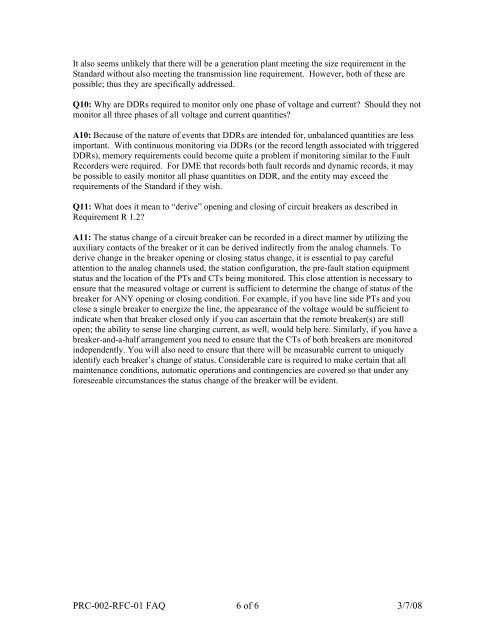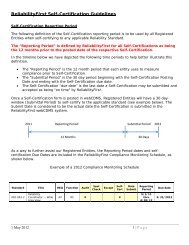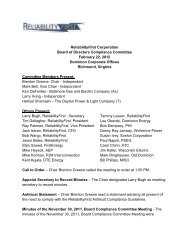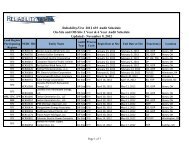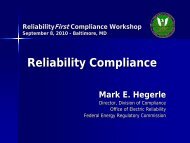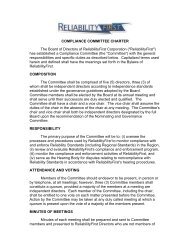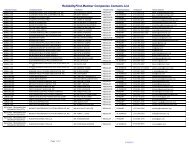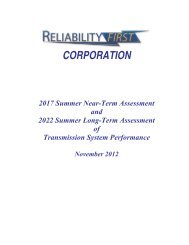PRC-002-RFC-01 FAQ Document
PRC-002-RFC-01 FAQ Document
PRC-002-RFC-01 FAQ Document
Create successful ePaper yourself
Turn your PDF publications into a flip-book with our unique Google optimized e-Paper software.
It also seems unlikely that there will be a generation plant meeting the size requirement in the<br />
Standard without also meeting the transmission line requirement. However, both of these are<br />
possible; thus they are specifically addressed.<br />
Q10: Why are DDRs required to monitor only one phase of voltage and current? Should they not<br />
monitor all three phases of all voltage and current quantities?<br />
A10: Because of the nature of events that DDRs are intended for, unbalanced quantities are less<br />
important. With continuous monitoring via DDRs (or the record length associated with triggered<br />
DDRs), memory requirements could become quite a problem if monitoring similar to the Fault<br />
Recorders were required. For DME that records both fault records and dynamic records, it may<br />
be possible to easily monitor all phase quantities on DDR, and the entity may exceed the<br />
requirements of the Standard if they wish.<br />
Q11: What does it mean to “derive” opening and closing of circuit breakers as described in<br />
Requirement R 1.2?<br />
A11: The status change of a circuit breaker can be recorded in a direct manner by utilizing the<br />
auxiliary contacts of the breaker or it can be derived indirectly from the analog channels. To<br />
derive change in the breaker opening or closing status change, it is essential to pay careful<br />
attention to the analog channels used, the station configuration, the pre-fault station equipment<br />
status and the location of the PTs and CTs being monitored. This close attention is necessary to<br />
ensure that the measured voltage or current is sufficient to determine the change of status of the<br />
breaker for ANY opening or closing condition. For example, if you have line side PTs and you<br />
close a single breaker to energize the line, the appearance of the voltage would be sufficient to<br />
indicate when that breaker closed only if you can ascertain that the remote breaker(s) are still<br />
open; the ability to sense line charging current, as well, would help here. Similarly, if you have a<br />
breaker-and-a-half arrangement you need to ensure that the CTs of both breakers are monitored<br />
independently. You will also need to ensure that there will be measurable current to uniquely<br />
identify each breaker’s change of status. Considerable care is required to make certain that all<br />
maintenance conditions, automatic operations and contingencies are covered so that under any<br />
foreseeable circumstances the status change of the breaker will be evident.<br />
<strong>PRC</strong>-<strong>002</strong>-<strong>RFC</strong>-<strong>01</strong> <strong>FAQ</strong> 6 of 6 3/7/08


